A Trip to Gyeongju
Gyeongju is a small city 50 miles north of Busan, known as the “Museum Without Walls” due to its incredible wealth of historic treasures. This was the capital of the powerful Silla Kingdom which ruled most of the Korean peninsula for nearly 1000 years (57 BC – 935 AD) and is without a doubt the most rewarding excursion you can make from Busan.
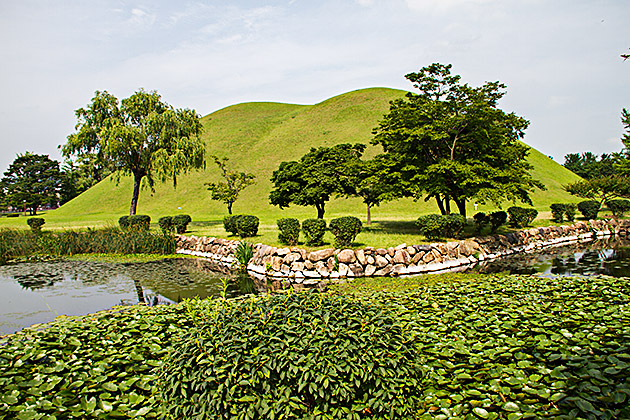
We took the KTX bullet train from Busan Station and arrived in Gyeongju in 28 minutes. Less than a half-hour. That’s significantly less time than it even took for us to reach the train station from our apartment. I’ve taken showers that last longer. The train cost ₩10,000 ($9) per person, and was unbelievably smooth and fast. It was mostly through tunnels, though, so you couldn’t see the countryside whipping past.
The Silla Kingdom is among the most long-lived and powerful dynasties in Asian history. They started in the Gyeongju/Busan area, and were the first to successfully unite most of the peninsula. It was a strict monarchy, with a hereditary royalty and aristocracy, and no chance of social advancement for the great majority of people. Sillans spoke Korean, wrote in Chinese characters, practiced both Confucianism and Buddhism, and battled with the Korean-speaking Goguryeo Dynasty for control of the North.
Although Gyeongju’s period of prominence lies over a thousand years in the past, the sense of history is still present in the modern-day city. The most conspicuous remnants of its rich heritage are the amazing royal tombs where kings and nobility were buried. These large, perfectly rounded hills covered in bright green grass pop up all over Gyeongju, like miniature replicas of the mountains that are always visible in the distance. There are 35 royal tombs and over 150 smaller mounds in the city itself, with many more found in the surrounding environs.
In the Daeneungwon Park, tourists have the chance to peek inside Cheonmachong, the Heavenly Horse Tomb, which is one of the most important of the burial sites. When it was excavated in 1973, over 10,000 artifacts were found inside, including a golden crown and a saddle engraved with a winged horse, which gave the tomb its name.
We had two days in Gyeongju, and had just enough time to hit most of the major highlights. Over the next couple posts, we’ll focus on this historic and gorgeous mountain city.
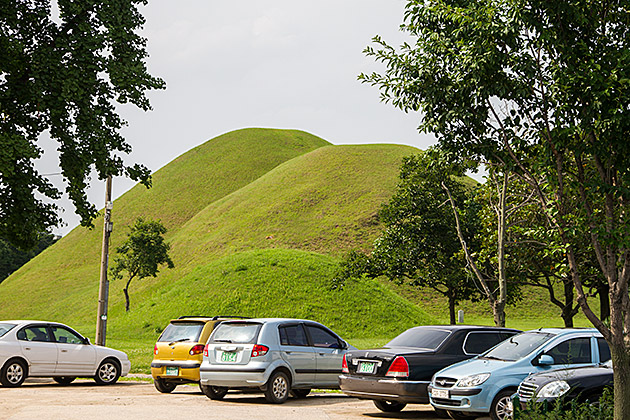
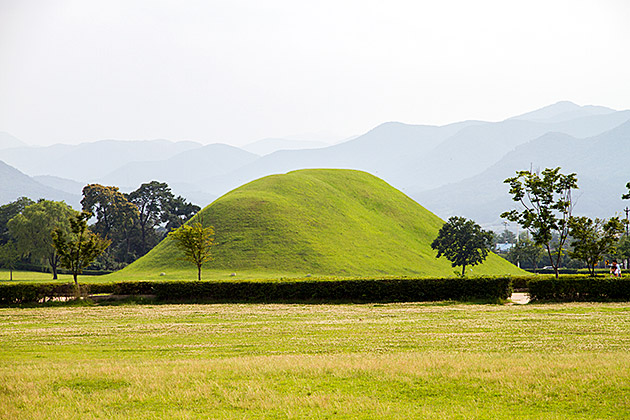
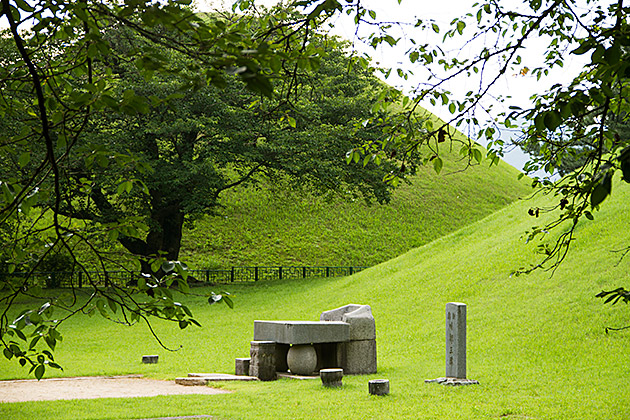
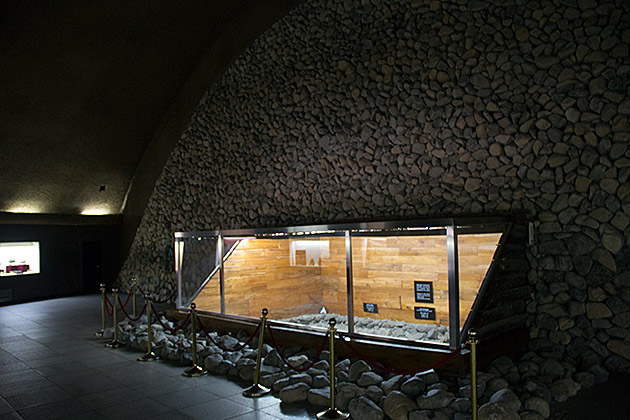
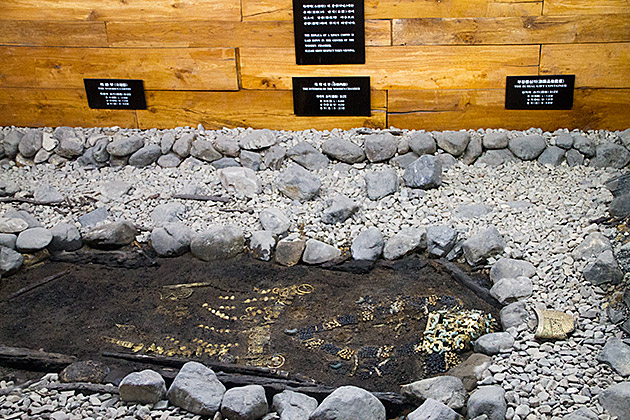
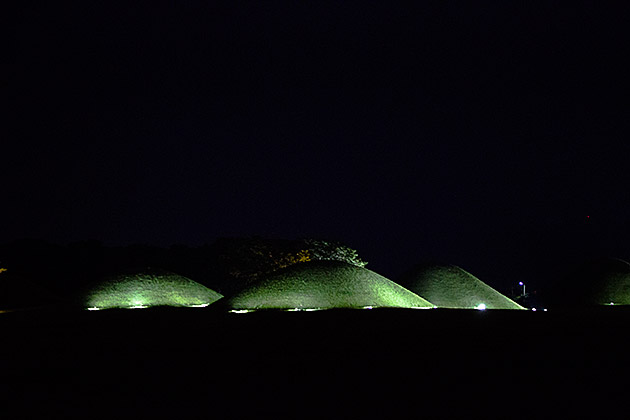

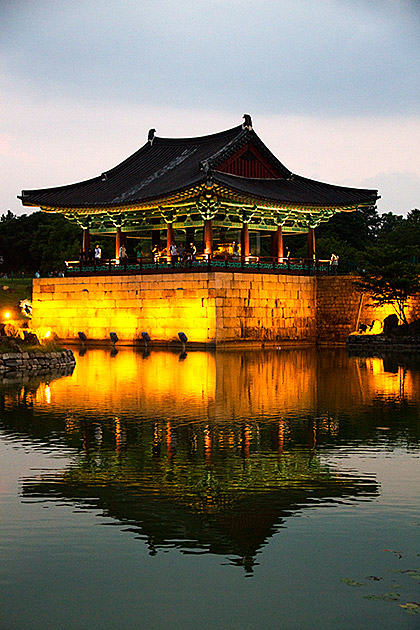
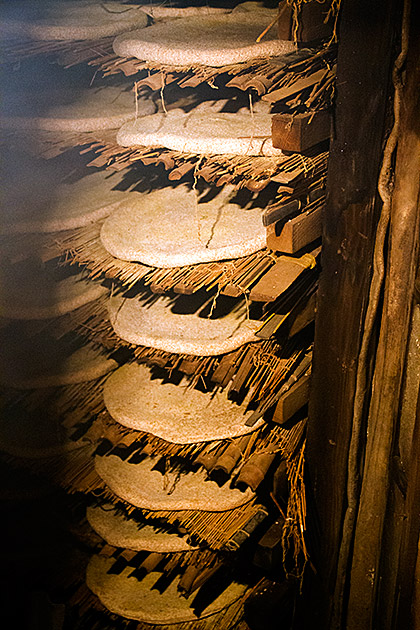

Silla kingdom is very interesting. To understand Japan, it is necessary to study Silla. Before the unification, there were Silla, Baekjae and Goguryeo in the Korean peninsula. Japan was Baekjae’s colony or its tributary. Japanese emperors’ family linage originates from Baekjae. When Baekjae was defeated by Silla and collapsed, around 200,000 Baekjae people, including royal families, aristocrats, engineers, scholars and artists, escaped to Japan, where they became the leading power group in Japan and still their offsprings are the main stream upper-class people in Japan. They lost their mother country in the Korean peninsula, so in their blood they are missing Korea(Baekjae). As a result, they have both of hatred and affection at the same time towards Korea.I think the origin of Korean wave or Hallyu in Japan has a historic background. Last but not least, the architecture style of Kyoto and Nara are Baekjae’s architecture style. Nara(old capital of Japan) means a country in Korean, namely our country(Baekjae’s country).